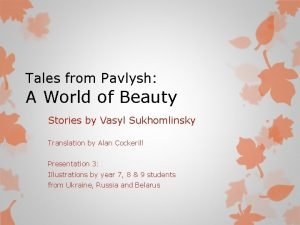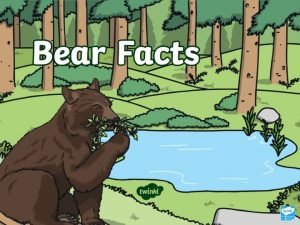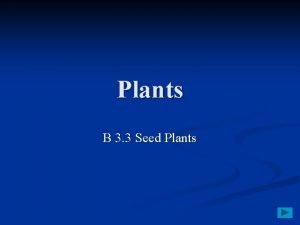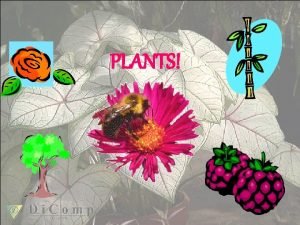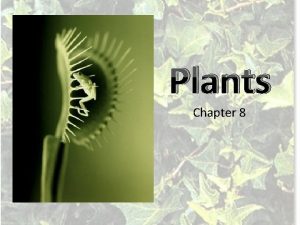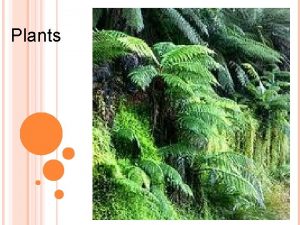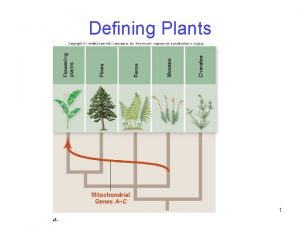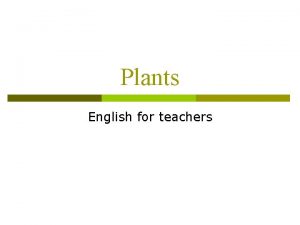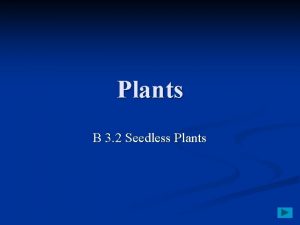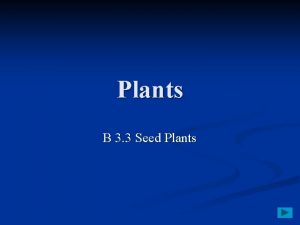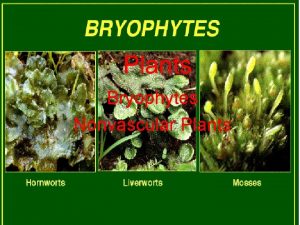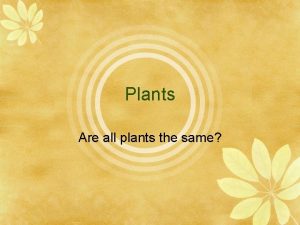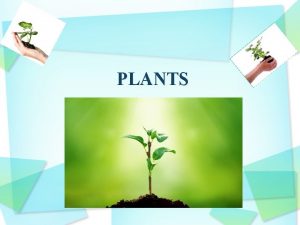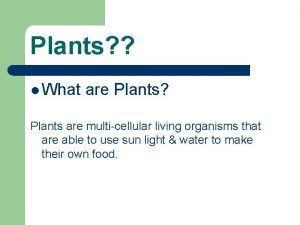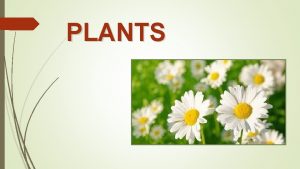The World around Us Plants The World around























































- Slides: 55

“The World around Us: Plants”

The World around Us: Plants This vocabulary was done with some advice of the teachers: • Federyagina Natalya A. • Korobitsyna Natalia N. • Podyeszhikh Olga V. • Zakharova Yelena A. Headmaster of School 215 (Sredneuralsk): Zakharova Yekaterina Germanovna

The Vocabulary to the topic “The World around Us: Plants” 2013 -2014

The World around Us: Plants

Dear friends! You have a vocabulary with pictures and interpretations made by the pupils of the 4 th grade: Dasha Balueva, Bogdana Belaya, Ksenia Davydova, Maxim Yershov, Valeria Loseva, Sophia Rumyantseva, Vladislav Serebryakov, Stanislav Tyugaev, Uliana Khaimina and Anna Cheraneva The idea of the created vocabulary is the following: most plants got their names because of the similarity in appearance. Try to compare the name with the picture and you are sure to learn the words easily. Good luck!


bell-flower - колокольчик In Great Britain the bellflower plant got its name from the flowers that are shaped like bells. In Russian the name “kolokol’chik” came from the Latin word “kolokol” thanks to unusual form of the flower.

blackberry - ежевика

blackberry - ежевика In English that plant was called “blackberry” thanks to the colour of its fruit. It’s black. The Ukrainian people had a legend according to which hungry and tired people lost in the forest survived thanks to that plant. The black berries of it were useful and helped them. So people called that plant “vyzhivika”. In times it has got the name “yezevika”.


blueberry – черника, голубика In English that plant was called “blueberry” because people thought there wasn’t the black colour in nature at all. Black is dark blue. In Russian people call that plant “chernika” for when they eat the berries they colour people’s teeth and mouth black.

corn flower or blue bottle – синий василёк

corn flower or blue bottle – синий василёк In England “blue bottle” got the name from its blue bottle shaped flowers. It is old-fashioned English. The Russian name “vasilyok” came from the Ukrainian legend about a plougher Vasily and a mermaid. They loved each other but he couldn’t live in the water. So the mermaid turned him into a modest blue flower.

buttercup - лютик

buttercup - лютик The English thought the yellow flowers of that plant looked like a cup of butter in their shape and colour. The Russians called that plant “lyutik” for its characteristics. It’s poisonous. Besides the name of that plant came from the Latin word “yellow”.


chickweed - мокричник In England the chickweed is an old weed whose leaves and seeds are liked by birds. It’s favourite food for small birds, especially chicks. In Russia the name of this plant came from the word “mokryi” – wet. The plant is always wet. It drinks up water well.


coltsfoot – мать-и-мачеха In English the name to that plant was given from the shape of the leaves – they look like a colt’s foot. The Russians had a legend about the origin of that plant. The downside of its leaf is warm – it’s like a mother. The upside is cold like a stepmother. That’s why that plant was called “mat’ -e-machekha”.

cotton grass - пушица

сotton grass - пушица In England this plant gets its name from the white flowers that look like white cotton balls. They are swamp plants growing around swamps. Nowadays people use them to decorate their gardens. In Russia the flowers of this plant are white and fluffy. People say “pushinka” about them.

crane’s bill - герань

сrane’s bill - герань In English the name of the plant came from the resemblance of the fruit and seeds to the crane’s bill. The Russian name came from the Latin word “geranium”. That is a crane.

feather-grass - ковыль

feather-grass - ковыль In English the plant got the name from the resemblance of the leaves. They look like feathers. The Russian name went from the verb “kovylyat’ ”, that is waving to the wind. We’ve got a fine legend connected this plant with the women loosing their sons in the battles. They are crying for them.

cap elf or fox glove – наперстянка

cap elf or fox glove – наперстянка The English think “the fox glove” was a bad pronunciation of “folks gloves”, that is the gloves for fairies. In our country we know this plant as “naperstyanka”. That name came from the legend about a girl and her angry stepmother. She put the girl’s thimbles into the ground and in spring the girl could see a plant with nice flowers looked like thimbles.


goose-grass - подорожник The English name of that plant came of its use. Geese enjoy eating goosegrass. The origin of the Russian name is simple – it’s a plant growing near the road.


horse-tail – хвощ полевой In English that plant was called for its resemblance to a horse’s tail. In Russian that plant got its name “khvoshch” because it looked like a tail of a horse too.

Jacob’s ladder (blue disease) – синюха голубая

Jacob’s ladder (blue disease) – синюха голубая In English the name Jacob came from the Bible: “…and he dreamed and behold a ladder set up on the Earth, and the top of it reached to heaven…” The plant has long nice leaves with a ladder-like arrangement of leaflets. In Russian the plant was called “sinyukha golubaya” for its blue flowers.


lady’s slipper – венерин башмачок In England it is lady’s slipper, an orchid. This flower looks like a woman’s shoe. In the USA the lady’s slipper is also known as the moccasin flower. In Russia this plant is called “venerin bashmachok”, that is a shoe of one of the beautiful women in the world. Venera was the goddess of beauty.


larkspur - живокость In England the plant’s name comes from the shape of the spur, which looks like the back toe of a lark. In Russian the plant “zhivokost’” got its name thanks to its useful characteristics. The pot liquor of that plant was used in folk medicine. It cured the breaks – so it was called the plant animated the bones.


primrose - примула The English took the name of that flower from the Latin “the first”. In England ancient people believed primroses appeared in Paradise, they attracted fairies. The Russian name of that flower also came from the Latin “the first”. These flowers are the first ones we can enjoy in early spring.

sea-buckthorn - облепиха

sea-buckthorn - облепиха In England that plant was called seabuckthorn for its growing along the rivers and seas in nature. The Russian name “oblyepikha” came to that plant for the berries growing closely to the branches.


self-heal - черноголовка The English gave the name to the plant for its useful characteristics – it could heal all, cure all and self heal. In Russian the name “chernogolovka” came from the colour of the leaves and flowers. They are dark or browndark.


snow drop - подснежник Snow drops are always loved in English gardens. The flowers look like white drops of milk. In Russia the name of this flower is connected with its early blossom – it comes out from just under the snow.


speedwell - вероника The English name of that plant came from the archaic meaning of the word “speed” that is to “thrive”, to become healthy fast. In Russian the name came from the Latin words “vera unica” that is real medicine. There is also a legend about Veronica, the woman who gave Christ the cloth to wipe his face on the way to Calvary.


sunflower - подсолнух In English the sunflower has got the shape and the image of the sun. In Russian the name of this plant came from Latin. It is the flower of the sun.


sweet William – гвоздика турецкая The English had a legend about the origin of that plant. It was named after King William the Conqueror (1027 -1087) – the flowers were decorated with a King’s crown ( at the top of the plant). The King’s guards brought it to England. The Russian “turetskaya gvozdika” put the name for its likeness with the smell of the spice.


toadflax - льнянка The English name is connected with the resemblance of the flowers to toads and the leaves to flax. The Russian name “lnyanka” came from the Greek word “linon” – flax. The leaves of the plant look like a flax before blossom.

woody nightshade - паслён

woody nightshade - паслён The English think this plant grows only at night – that’s why it’s got the name woody nightshade. In Russian the name “paslyon” came from the word “spit” – “slyuna” – the fruit has a glossy sight. It’s fun but it looks like spread with spit.
 How does moss reproduce
How does moss reproduce Vascular vs nonvascular plants
Vascular vs nonvascular plants Flowering and non flowering plants similarities
Flowering and non flowering plants similarities C3 plants vs c4 plants
C3 plants vs c4 plants Example of what goes around comes around
Example of what goes around comes around Goes around comes around meaning
Goes around comes around meaning Weird restaurants around the world
Weird restaurants around the world School calendars around the world
School calendars around the world Puppets around the world
Puppets around the world Palm sunday around the world
Palm sunday around the world Madame tussauds around the world
Madame tussauds around the world Unit 2 around the world
Unit 2 around the world Light the candles all around the world
Light the candles all around the world Professor d. l. ashliman
Professor d. l. ashliman Why is it called the shot heard around the world
Why is it called the shot heard around the world Chapter 29: nationalism around the world answers
Chapter 29: nationalism around the world answers Chapter 1 academic life around the world
Chapter 1 academic life around the world Around the world eyfs
Around the world eyfs Beauty stories from around the world
Beauty stories from around the world Meeting famous people around the world
Meeting famous people around the world Private equity returns and disclosure around the world
Private equity returns and disclosure around the world Me and my hobbies
Me and my hobbies What determines a region's climate
What determines a region's climate Christmas around the world qr quest
Christmas around the world qr quest Tobacco causes _______ of cancer deaths around the world. *
Tobacco causes _______ of cancer deaths around the world. * Foods around the world
Foods around the world Lexington and concord activity
Lexington and concord activity December holidays around the world
December holidays around the world Around the world, the most common residence pattern is
Around the world, the most common residence pattern is Beam bridges around the world
Beam bridges around the world Where in the world do bears live
Where in the world do bears live Strange hotels in the world
Strange hotels in the world Oil pastels target
Oil pastels target Individualism and momentum around the world
Individualism and momentum around the world Financial literacy around the world
Financial literacy around the world Winter festivals around the world
Winter festivals around the world Traditional clothing around the world
Traditional clothing around the world Juice plus tower garden
Juice plus tower garden Deciduous forests around the world
Deciduous forests around the world Development funnel
Development funnel Academic life around the world
Academic life around the world Nationalism and revolution around the world
Nationalism and revolution around the world Nationalism and revolution around the world
Nationalism and revolution around the world Famous myths
Famous myths Nationalism and revolution around the world
Nationalism and revolution around the world Hát kết hợp bộ gõ cơ thể
Hát kết hợp bộ gõ cơ thể Ng-html
Ng-html Bổ thể
Bổ thể Tỉ lệ cơ thể trẻ em
Tỉ lệ cơ thể trẻ em Voi kéo gỗ như thế nào
Voi kéo gỗ như thế nào Chụp tư thế worms-breton
Chụp tư thế worms-breton Hát lên người ơi
Hát lên người ơi Kể tên các môn thể thao
Kể tên các môn thể thao Thế nào là hệ số cao nhất
Thế nào là hệ số cao nhất Các châu lục và đại dương trên thế giới
Các châu lục và đại dương trên thế giới Cong thức tính động năng
Cong thức tính động năng


















